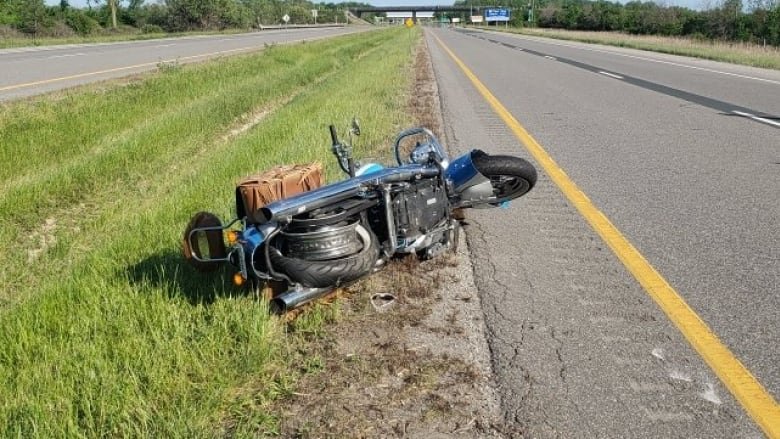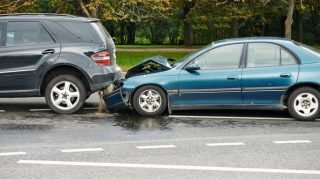If you are going on a very long road trip or simply navigating about town, riding a motorcycle is a lot of fun. If you’re not careful, a straightforward ride can end tragically. Motorcycle crashes happen in the open, as opposed to a cage, as in automobile collisions, hence there is a higher danger of mortality.
Compared to other road travellers, motorcycle riders have a higher death rate:
Motorcycle riders made up 14% of all road fatalities in the US in 2019, despite motorbikes making up just 3% of all registered vehicles, according to the NHTSA (National Highway Traffic Safety Administration) (NHTSA). In addition, 84,000 motorcycle riders had injuries on the highways in 2013. Driving a motorcycle is inherently risky. However, accidents and fatalities can be decreased if riders exercise caution and put on safety helmets.
Risks on the highway
The typical driver might not detect uneven road conditions, gravel on pavement, or railroad lines. But because they may be so deadly, frequent risks like these should be avoided by bicyclists. Because motorcycles are smaller & less stable than cars, they are more susceptible to road imperfections and unforeseen impediments.
Speeding
On lighter, more powerful motorbikes, speeding and other risky behaviours become less difficult (such as sport and supersport bikes). A staggering 33 per cent of motorcycle deaths in 2019 were caused by speeding. Younger motorcyclists are more likely to die or have serious injuries in incidents caused by speeding. Motorcycle riders between the ages of 21 & 24 who were killed in collisions were speeding 50% of the time.
Left-Handed Traffic Turning
Left-turning automobiles and motorcycles regularly clash tragically. According to NHTSA data for 2019, over half of all fatal motorcycle-car incidents happened while the automobile was turning left at the time of the collision. Left-turning vehicles commonly crash with approaching or passing motorbikes at junctions.
Helmet Use Away from Motorcycles
One of the easiest things a biker can do to protect themselves is to wear a helmet. The NHTSA estimates that if a helmet had been worn, 37 out of every 100 fatal motorcycle accidents may have been prevented. In certain states, all motorcycle riders are required to wear helmets. Some states require riders to wear helmets regardless of their age (similar to bicycle helmet laws).
Driving while distracted
poor visibility and speeding (car drivers have a difficult time judging the speed of motorcycles). It is clear from the legislation that anyone making a left turn must yield to approaching vehicles. Almost often, drivers of vehicles who collide with motorcyclists while turning left are at fault. Motorcycle riders may still share some of the faults if a left-turn collision is brought on by speeding, disregarding a red light, or riding in the wrong lane.
Accidents between motorcycles and immovable objects
When they collided with stationary objects in 2019, motorcycle riders died at a rate that was greater than that of passengers in passenger cars. For instance, if a cyclist is riding on a rain-slick road and their bike smashes into a tree or a fence, they might be killed or suffer serious injuries. Compared to passenger automobiles (16%), light trucks (13%), and big trucks (4%), fixed object collisions accounted for 23% of the 5,114 fatal motorcycle incidents in 2019.
Motorcycles involved in head-on crashes
As per the National Highway Traffic Safety Administration, there were 5,114 fatal motorbike accidents involving other vehicles in 2019. (NHTSA). The majority of accidents happened when a car hit the motorbike in front of it. 7 per cent of rear-end collisions included motorcycles. Due to their lack of safety and the significant weight difference between motorbikes and vehicles, head-on crashes are among the worst for motorcycle riders.
Dividing lanes for motorbike traffic
Almost all drivers have witnessed it: A motorcyclist weaved its way through a row of stationary or slowly moving automobiles. This method is known as “line splitting” (or sometimes lane sharing or lane filtering.) Automobiles don’t anticipate being passed in slow or stopped traffic, and motorbikes have limited room to manoeuvre as they weave between cars. This frequently leads to motorbike accidents. Beginning in 2021, lane splitting will only be permitted in a small number of states. The rider is likely to be found accountable if lane-splitting causes a motorbike accident.









